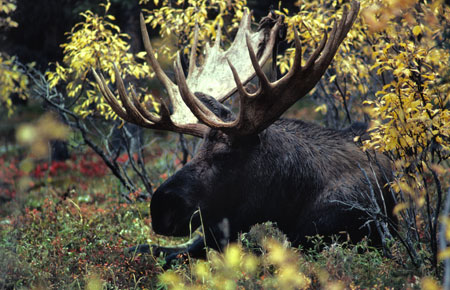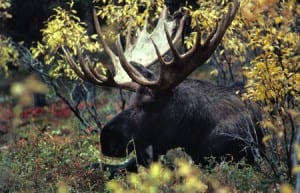Audio Player
Rich Lowell said this fall’s moose hunt is pretty much the same as last year. He is the Area Wildlife Biologist for the Alaska Department of Fish and Game.
“I think we’re off to a pretty good start,” Lowell said. “I’m expecting a good high harvest this year.”
That’s because the data looks promising. Moose numbers are growing. And the winters have been mild lately giving the moose a better chance of surviving.
“If we have a winter with heavy snowfall that actually benefits predators like wolves because they function very well in snow and ungulates are typically hampered by heavy snow,” he said.
But even with heavier snow years, the long-term trend is growth in the moose population. In fact, it’s been expanding for decades.
The harvest average for the last six years has been about 90 moose. Just over a decade ago the annual harvest was around 50 to 60 moose. Those numbers are a far cry from the way it used to be. Lowell said the first moose sighting ever recorded in Unit 3 was in the 1960s.
“We now have moose on all the major Unit 3 islands all the way out to Kuiu and then on the mainland Unit 1-B portion we appear to be seeing an increase in distribution of moose moving northward from Thomas Bay up into you know, Farragut Bay, Cape Fanshaw, Sandborn Canal area,” Lowell said. “So, in general our moose population appears to be increasing, our harvest reflects that and we hope it continues.”
Managers, like Lowell, are gearing hunts to try to make sure it does continue.
Last year, hunters took 106 moose which was the second highest harvest on record. It followed a harvest in 2009 when 109 moose were taken. That was the year that antler restrictions were liberalized.
Moose hunting in the area is all about the antlers. There is no quota. It’s a hunt that’s restricted to bulls with two or more brow tines on both antlers. It gives managers a lot of control. They can target older bull moose and keep harvests down.
Lowell said it’s not an easy hunt for hunters.
“They can be difficult because our moose here often have atypical antler configurations,” he said.
Hunters are required to register for the hunt and watch an instructional video called, “Is this Moose Legal?”
“To learn a little bit about our antler architecture and what to look for and then we actually have a new brochure out this year discussing antler configuration and what’s legal and what’s not legal,” Lowell said, “and the take home message is if you’re in doubt at all, don’t shoot.”
Just because the hunt takes a careful eye doesn’t mean there are more illegal kills here than other places. Lowell said illegal kills average about 7 to 10 percent of the harvest a year which is about average in the state for antlered hunts.
The season runs September 15 through October 15. It includes several units: the Unit 1-B mainland, the Unit 3 islands, and the extreme southern portion of Unit 1-C.












